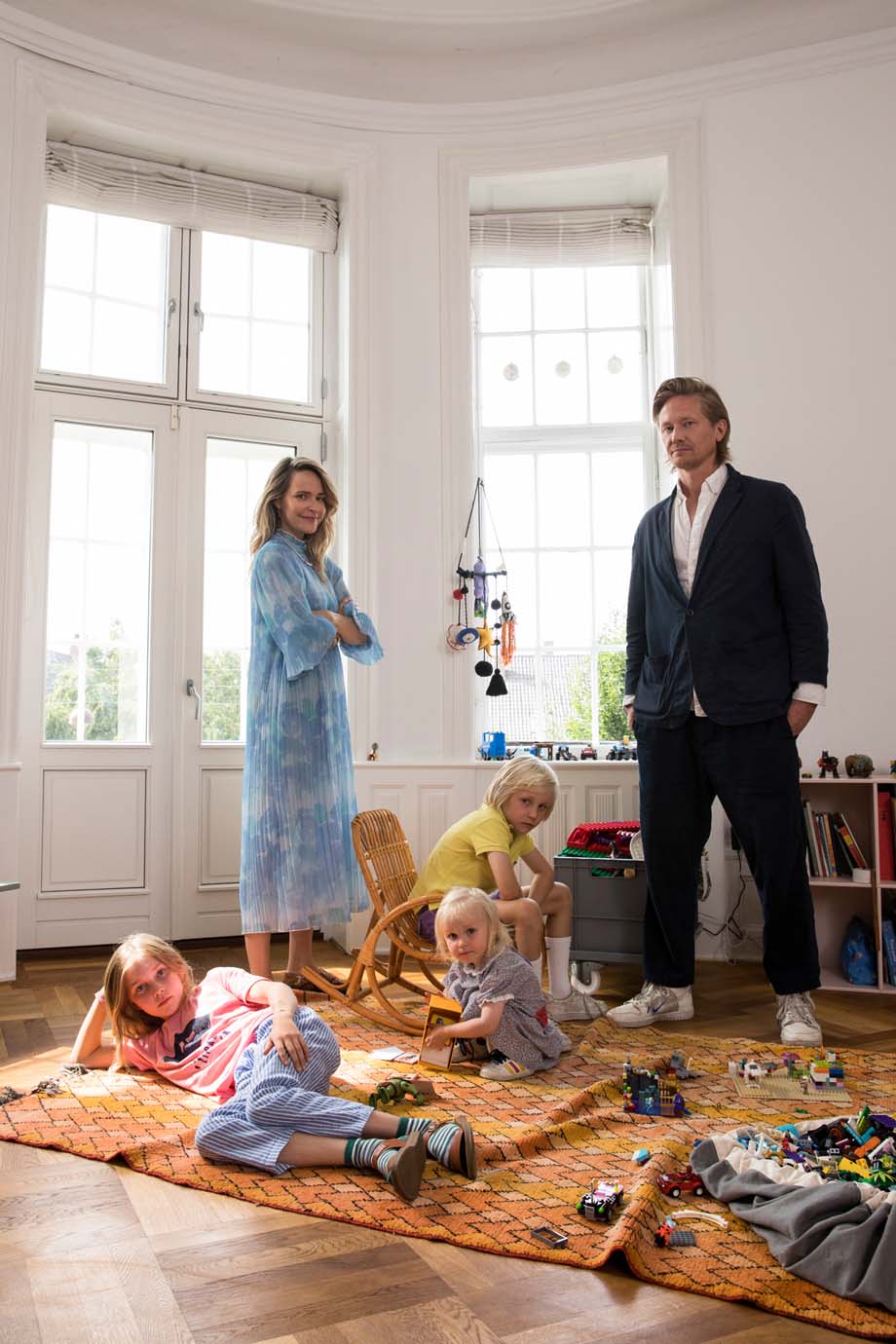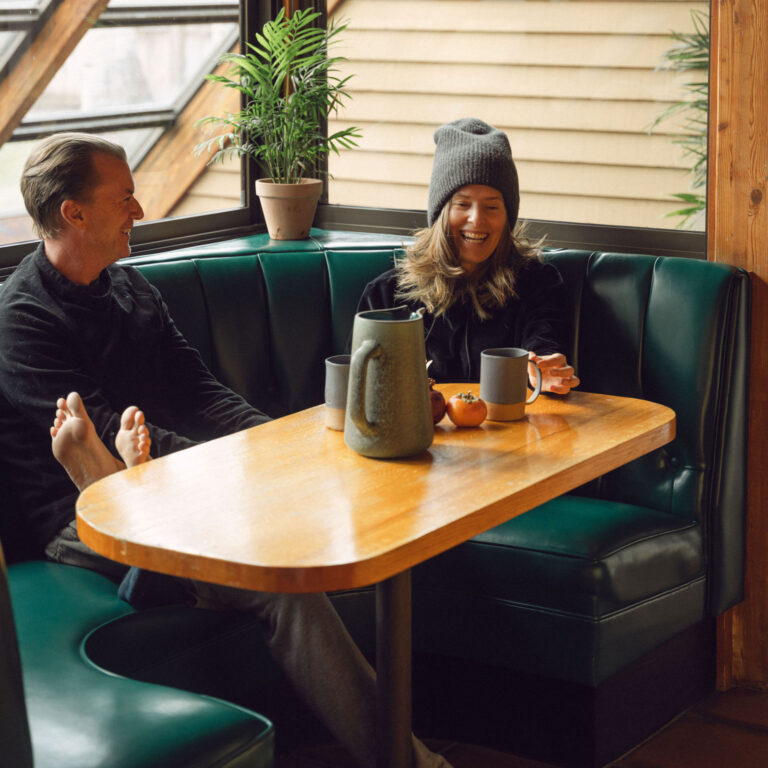
On a quiet October afternoon, Ganni’s husband and wife duo, creative director Ditte Reffstrup and CEO Nicolaj Reffstrup, are touring the Danish fashion line’s first New York store. With its pastel walls painted watercolor shades of pink, yellow and blue, dressing rooms lined with black and white photographs taken by Serbian photographer Ana Kraš and rainbow store displays made from recycled plastic, the new boutique is a physical reflection of the vivid, eclectic world Ganni has created. All the color, pattern and playfulness of the new shop is likely the appeal that has garnered Ganni over 400 retailers worldwide and an explosion of new, standalone boutiques across the US. The New York location opened simultaneously with a Melrose Avenue boutique in LA, and a Miami store will be up and running by the end of the year.
“I felt like people would always think that being from Copenhagen either meant you would be very androgynous or very boho,” Ditte explains of her original goal with Ganni. “I could not recognize myself in that. I thought that there was something missing.” The brand was founded in 2000, by the Copenhagen–based gallerist Frans Truelsen, who placed its focus on cozy cashmere sweaters. When Nicolaj and Ditte took over in 2009, they transformed the brand into what it’s known as today: “colorful and full of contrast,” Ditte puts it simply.
When asked what Ganni’s signature aesthetic might be, Ditte resoundingly responds with “leopard.” And it’s true: the New York store’s racks are lined with every iteration of leopard print imaginable, from maxi skirts in the usual colorways to pink pleated frocks and mini dresses with puffed sleeves and shoulders. What makes these pieces stand out, however, is the styling. “I was the youngest one growing up and I was always helping my mom and sister,” says Ditte with a laugh. “I love dressing people. I would still do that. And at the office, I do!”
But what exactly is the essence of Ganni’s approach to styling? “It’s pragmatic,” explains Nicolaj. “Maybe you cycle everywhere but you still want to look good in an effortless way.” A scroll through the brand’s Instagram offers artful compositions of unexpected ways to wear things that also actually make sense for real life. Take, for example, shorts and leather cowboy boots styled with a faded vintage T-shirt— or, a short-sleeve intarsia sweater with a striped long-sleeve shirt underneath and chunky black Mary Janes, socks and high waisted trousers. With price points that put the brand firmly between high-end and fast fashion, it’s also relatively accessible to stock up on quirkier, standout pieces that will make a statement in your wardrobe, such as red paisley printed stockings or a leopard print blouse with an oversized yoke.
As Ganni continues to grow, the brand is making a dedicated effort to become more sustainable; from biodegradable rainwear and eliminating single-use plastics in their packaging to their Climate Compensated collection (in which the items show customers that Ganni has covered the cost of the CO2 emissions of that particular garment), Ganni has created sustainable development initiatives that go deep. “These goals have a profound impact on the way we conduct our business,” says Nicolaj. “We think it’s a moral obligation that we all have now, but hopefully in five years this will be something every brand will do tenfold.”










 in your life?
in your life?

